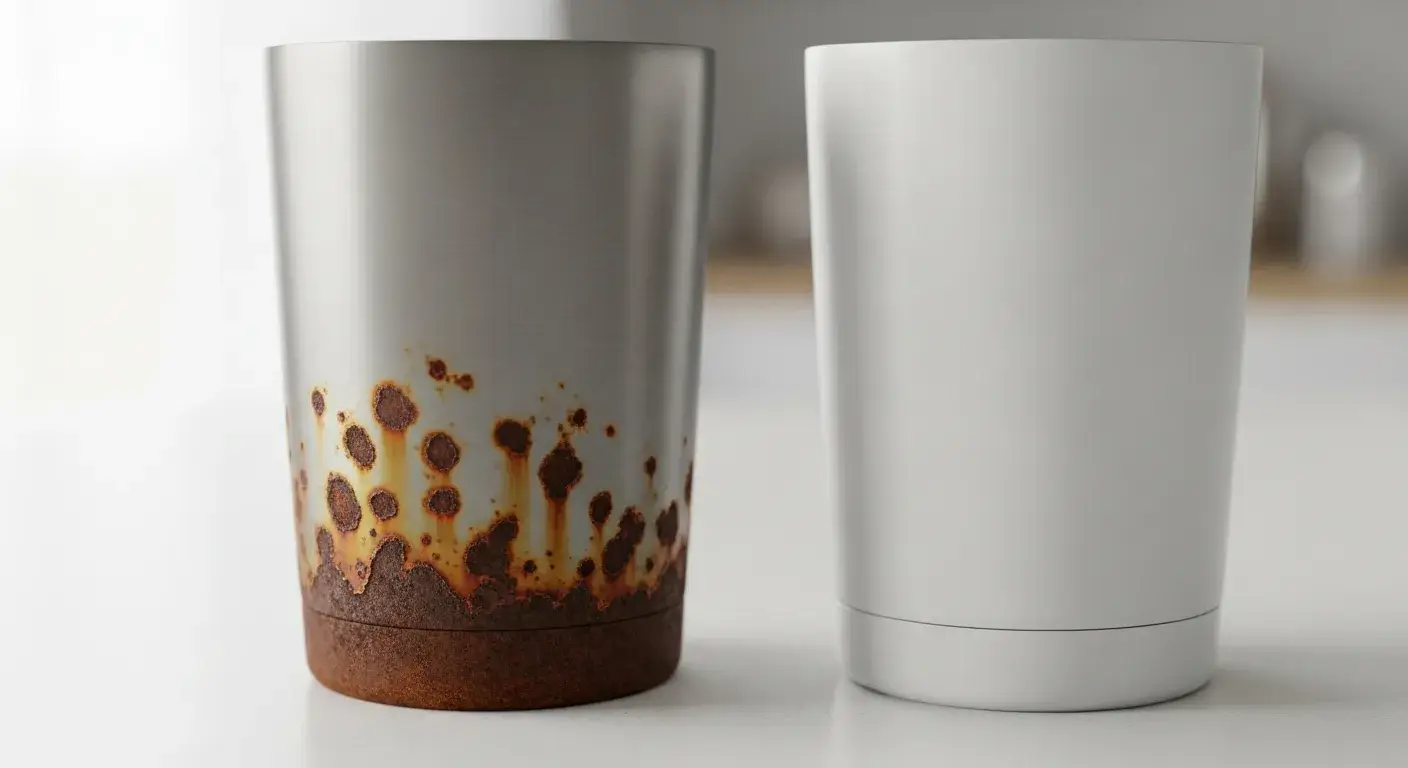
Worried your "rust-proof" stainless steel cup is showing spots? You're not alone—and yes, it can happen if you're not careful.
Stainless steel cups resist rust due to their chromium content, but they can still rust when exposed to salt, acids, or poor care.
Here's how to keep your drinkware clean, safe, and lasting for years.
Why Is Stainless Steel Supposed to Be Rust-Resistant?

Stainless steel looks shiny and tough, but what makes it truly special is invisible: a self-healing shield made of chromium oxide.
The chromium in stainless steel reacts with oxygen to form a protective barrier that prevents rust from forming under normal conditions.
What Makes Stainless Steel "Stainless"
Stainless steel must contain at least 10.5% chromium1, which forms a thin, stable oxide layer that stops moisture and oxygen from reaching the iron inside. If this layer gets scratched, it reforms automatically—as long as there's air.
Here's a quick comparison:
| Stainless Steel Grade | Chromium % | Nickel % | Rust Resistance | Common Use |
|---|---|---|---|---|
| 201 | 16–18% | 0–1% | Low | Budget cookware |
| 304 (18/8) | 18% | 8% | High | Drinkware, kitchen tools |
| 316 | 16–18% | 10–14% | Very High | Marine, acidic contents |
Without chromium, the steel would rust just like any old nail left in the rain.
When and Why Do Stainless Steel Cups Actually Develop Rust?
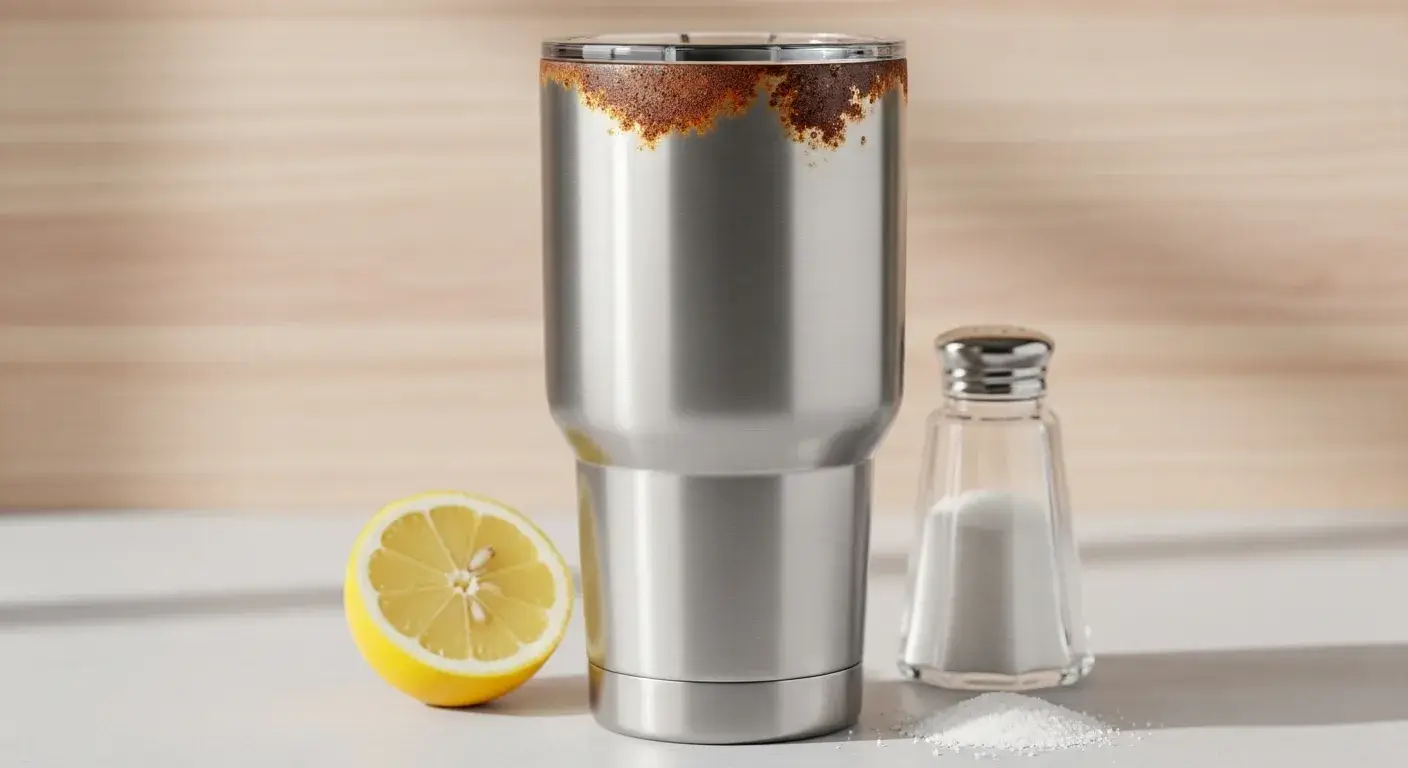
Even "stainless" steel has limits. In real life, rust shows up when those limits are pushed—by salt, acid, heat, or neglect.
Rust forms when the protective chromium oxide layer is damaged and can't reform—often due to chlorides, acids, or trapped moisture.
Common Rust Triggers in Cups
- Salt and Chlorides: Dishwasher detergents, salty water, or even sweat introduce chlorides that break the protective layer.
- Acidic Drinks: Lemon water, soda, vinegar, and wine slowly wear down resistance.
- Trapped Moisture: Storing your cup wet or sealed blocks oxygen, stopping the layer from healing.
- Scratches: Tools or rough cleaning can embed iron that corrodes and spreads.
- Heat Damage: High temps (>425°F) break down chromium bonds, leaving steel vulnerable.
I had a stainless steel tumbler develop rust after only a few months in the dishwasher. It turned out the detergent had high salt content.
"Stainless" means resistant, not immune—with enough abuse, any grade can fail.
How Can You Identify High-Quality Stainless Steel in Cups?
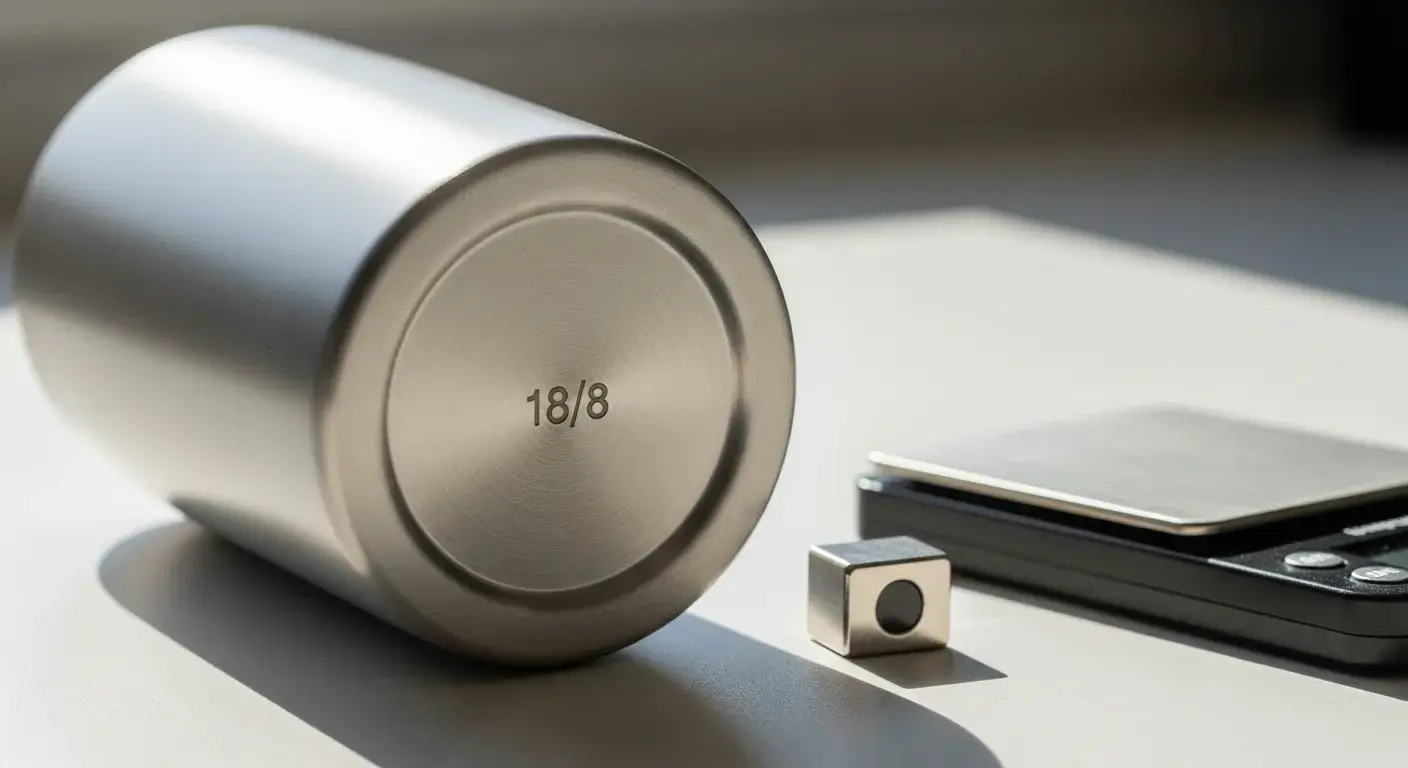
Not all stainless steel is created equal. Some grades are cheaper—and rust faster. Here's how to tell if your cup is built to last.
Look for 304 or 316 grade stainless steel; use magnet, stamp, and weight checks to judge quality quickly.
DIY Quality Checks
- Stamp or Label: Look for "18/8" or "304" marking. Avoid unmarked or "201" steel.
- Magnet Test: 304 is usually non-magnetic. If a strong magnet sticks, it's likely lower grade.
- Weight: Heavier cups often mean thicker steel walls—less prone to dents or damage.
- Etch Test: Rub with copper wire and vinegar; blue stain = low nickel = lower rust resistance.
| Test Type | What to Look For | Result |
|---|---|---|
| Magnet | Weak or no attraction | Likely 304 or 316 |
| Weight | Heavier than plastic/cheap steel | Durable, thick gauge |
| Grade Stamp | "18/8", "304", or "316" | Good quality |
Buying drinkware from certified sources ensures you get food-safe, rust-resistant material. At Sibottle, we only use tested 304 or 316 stainless.
What's the Safest Way to Clean Rust from Your Stainless Steel Cup?
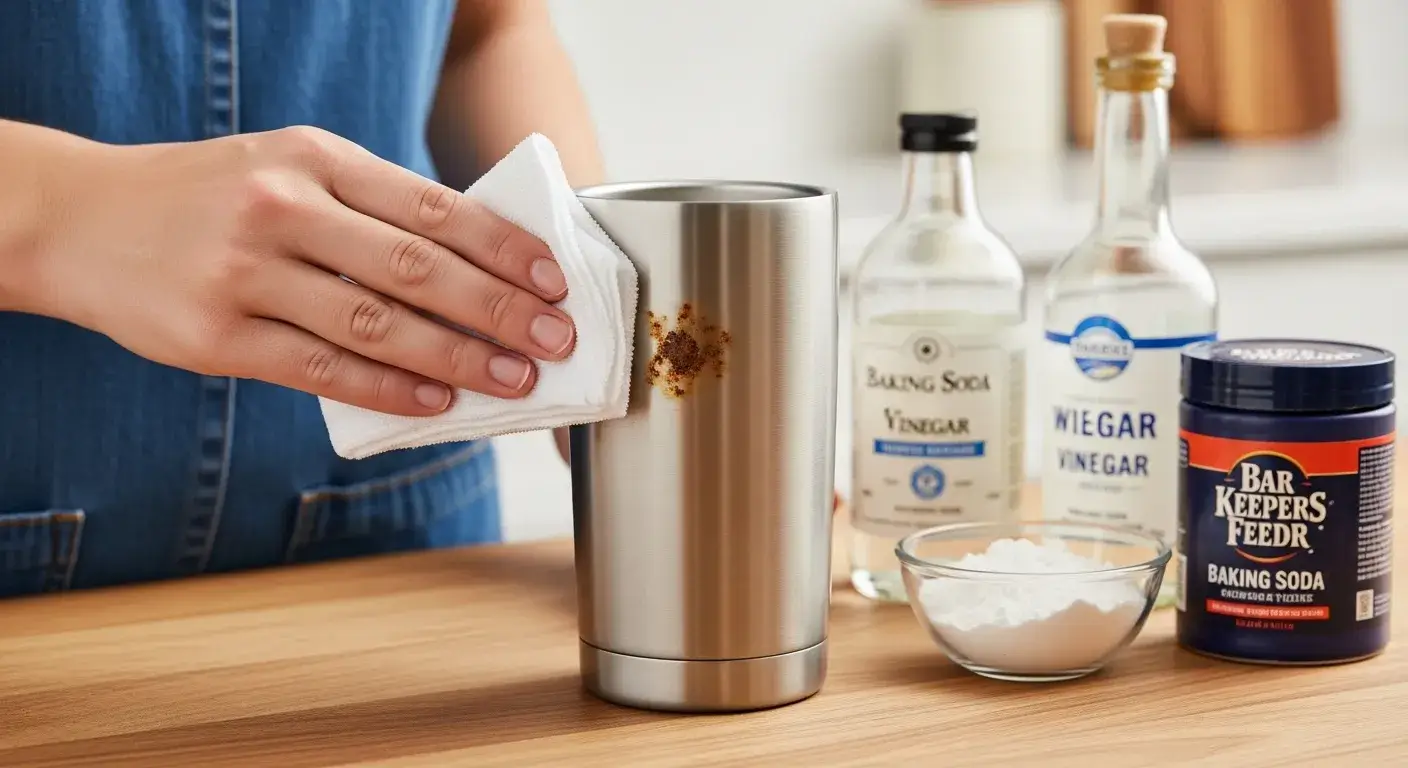
Don't panic if you see rust—it's fixable in most cases. Just don't reach for bleach or steel wool.
Use baking soda, vinegar, or Bar Keepers Friend to gently clean rust without damaging the protective chromium layer.
Safe Cleaning Steps
-
Baking Soda Paste
Mix 1 tbsp baking soda with water into a paste. Scrub gently with a soft cloth, following the steel grain. -
Vinegar Soak
Mix 1 part vinegar with 1 part water. Soak the affected area for 10–15 minutes, then rinse. -
Bar Keepers Friend (BKF)2
Apply a small amount to a damp cloth, rub gently, rinse well. It contains oxalic acid, which removes rust safely.
Never use bleach—it causes corrosion. Avoid steel wool, which leaves behind iron particles that accelerate rust.
Rust Prevention Tips
- Always dry your cup completely.
- Don't leave acidic drinks overnight.
- Hand wash instead of using a dishwasher.
- Store with the lid off to allow airflow.
Cleaned right, most stainless cups can last 5–10 years.
Is It Safe to Drink from a Cup with Rust Spots?
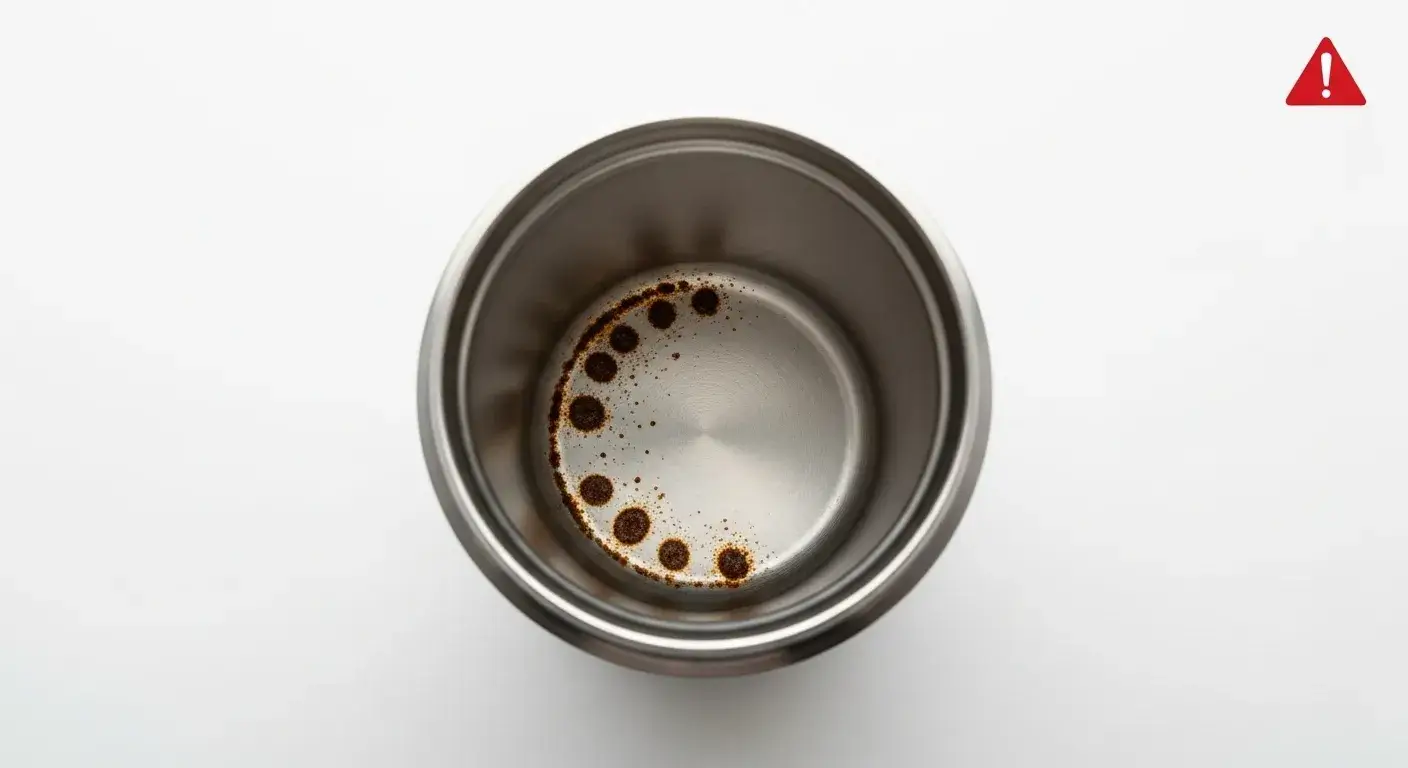
It's not ideal—but it's also not instantly dangerous. Still, don't ignore rust spots.
Surface rust is not toxic in small amounts, but deeper pitting can harbor bacteria or leach metals. Clean rust immediately and monitor for damage.
What the Science Says
- Iron oxide (rust) is not poisonous—your body needs iron, and trace ingestion is harmless (WHO: <0.1 mg/day).
- Deep pits may allow bacteria to grow or lead to nickel/chromium leaching if the steel breaks down.
- Tetanus? It's not the rust—it's the bacteria that live in dirty environments, not your coffee cup.
When to Replace Your Cup
| Condition | Action |
|---|---|
| Surface rust only | Clean and monitor |
| Deep pits or flaking | Replace the cup |
| Rust returns quickly | Consider better grade (e.g., 316) |
I once tried using a rusty bottle during a hike—it left a metallic taste and I tossed it that night. It's not worth risking your health for a $20 cup.
How Do You Choose and Maintain Rust-Proof Stainless Steel Drinkware?
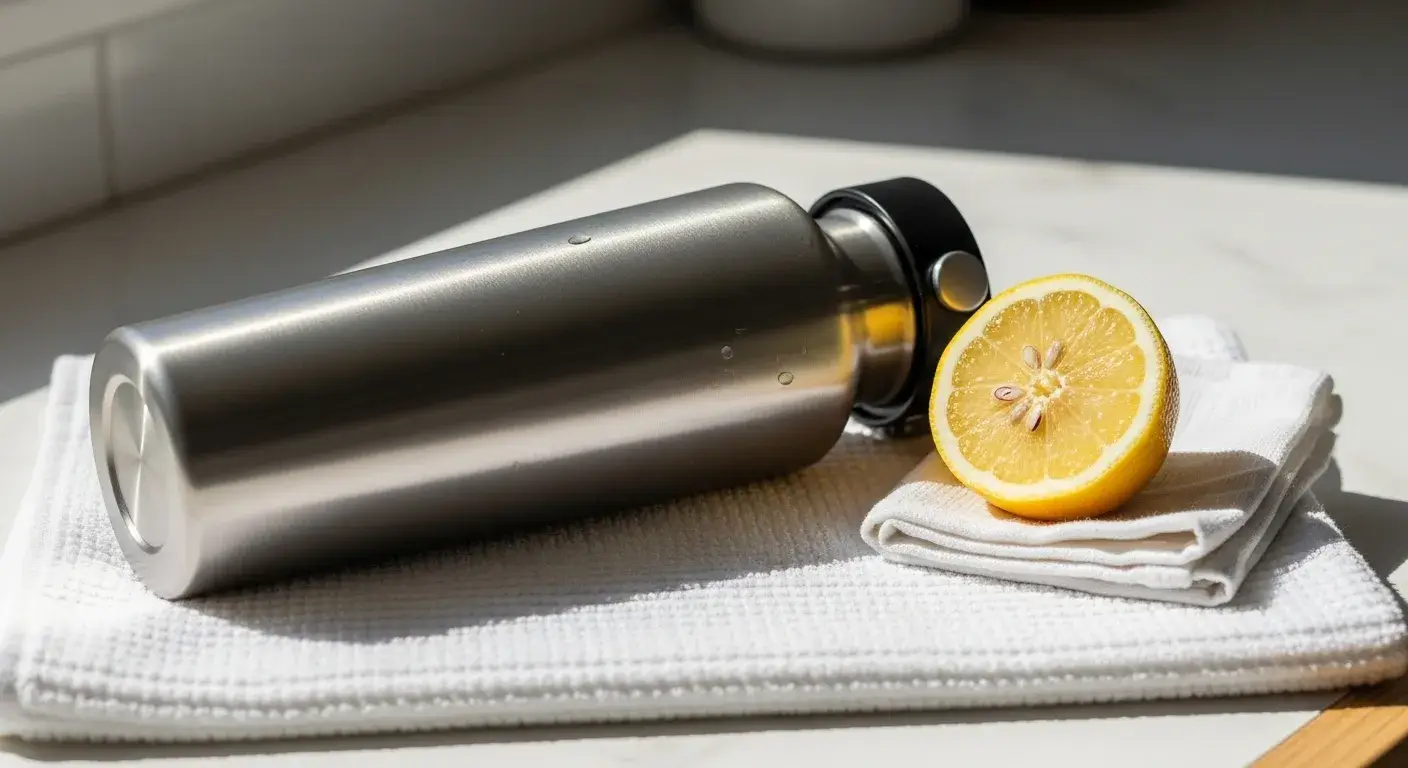
Choosing the right cup is only half the battle. How you clean and store it determines how long it stays rust-free.
Choose 304 or 316 stainless steel, clean gently, dry completely, and avoid acidic long-term use for the longest lifespan.
What to Look for When Buying
- Grade: 316 for high corrosion areas3 (beach, acidic drinks); 304 for everyday use.
- Wall Thickness: 18–20 gauge for durability.
- Finish: Electropolished or PVD-coated options resist corrosion better.
- Brand Reputation: Trusted names or verified suppliers like Sibottle.
Long-Term Maintenance Tips
- Hand wash with mild detergent.
- Rinse acidic drinks (tea, lemon) immediately.
- Dry with a soft cloth.
- Store with lid open to let air circulate.
With proper care, stainless steel drinkware can last 5–10 years or more.
Conclusion
Stainless steel cups can rust, but with the right grade, cleaning habits, and storage methods, you can keep yours spotless for years.
FAQs
Do stainless steel bottles rust?
Yes, especially if exposed to salt, acids, or stored wet. 304 resists it well, but not forever.
Is it safe to drink from a rusty thermos?
Occasionally, yes—but clean it promptly to avoid bacterial buildup or metal leaching.
Why do stainless steel cups develop rust spots?
Common causes are dishwasher salt, acidic drinks, or scratches4 that breach the protective layer.
What grade of stainless steel is best for cups?
304 (18/8) is standard5; 316 is better for salt or acid exposure.
How do you remove rust from stainless steel?
Use baking soda, vinegar, or a cleaner like Bar Keepers Friend6—never bleach or steel wool.
Can I put stainless steel cups in the dishwasher?
Technically yes, but it's safer to hand wash. Dishwashers increase rust risk over time.
Why is my Stanley Cup rusting?
Likely from salt in dish detergent, or trapped moisture. Try hand washing and drying completely.
Are cheap stainless steel cups safe?
Often made from 201 steel, which rusts faster and may lack proper food-safe testing. Always check for grade and certification.
Can rust on my cup make me sick?
Surface rust isn't dangerous, but pits can host bacteria. Clean it or replace if damaged.
How long will a stainless steel cup last?
With proper care, 5–10 years. Neglect can cut that down to 1–2 years.
Footnotes
-
Learn why 10.5% chromium creates a self-healing protective layer and discover how different corrosion types (pitting, crevice, galvanic) affect your stainless steel cups. ↩
-
Discover how oxalic acid safely removes rust from stainless steel and why this 138-year-old formula won't damage your cup's protective chromium oxide layer. ↩
-
Find out why 316 costs 20-30% more than 304 and when the molybdenum content justifies the investment for saltwater or acidic drink exposure. ↩
-
Understand which environments accelerate rust (chlorine, salt, moisture) and learn maintenance techniques to restore your cup's self-healing protective layer after damage. ↩
-
See the exact chemical composition of 304 steel and learn what the "18/8" stamp means for food safety and rust resistance in everyday drinkware. ↩
-
Get step-by-step safe cleaning methods using household items and understand why common products like bleach and steel wool will actually worsen rust problems. ↩

